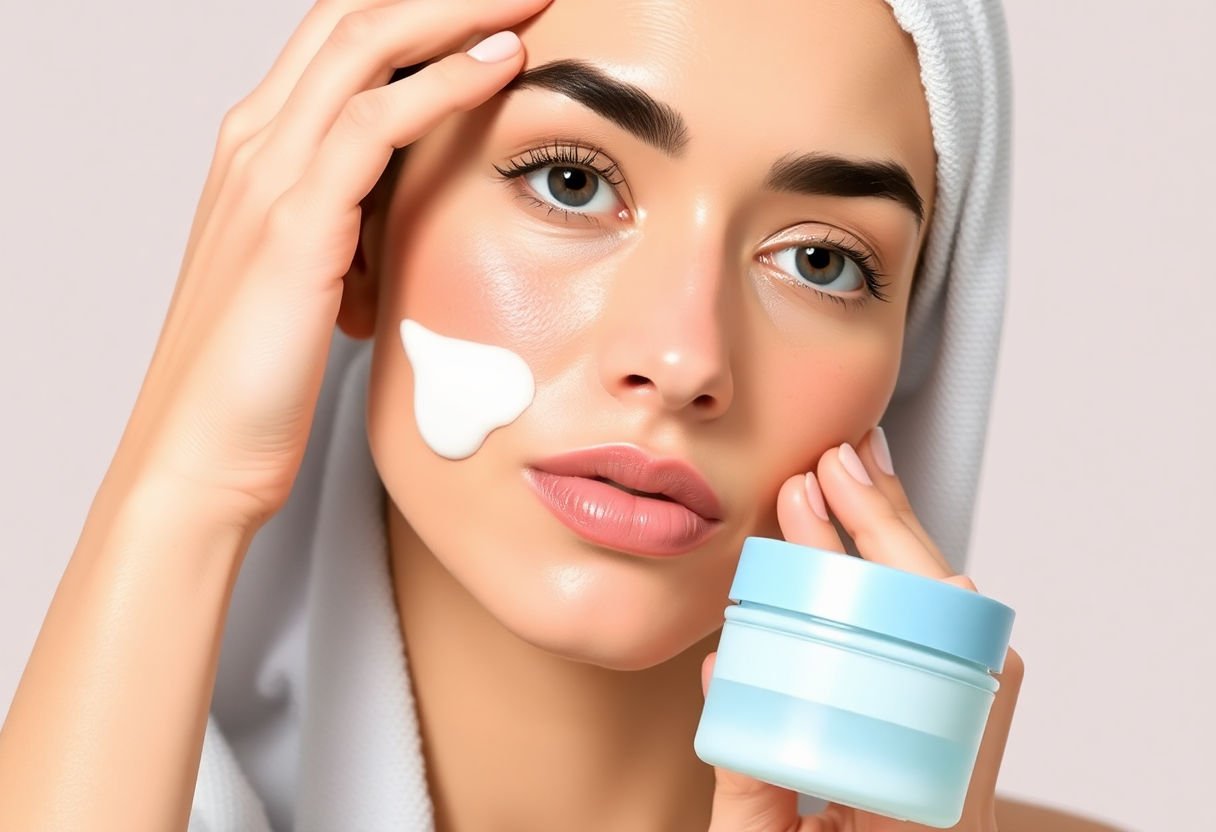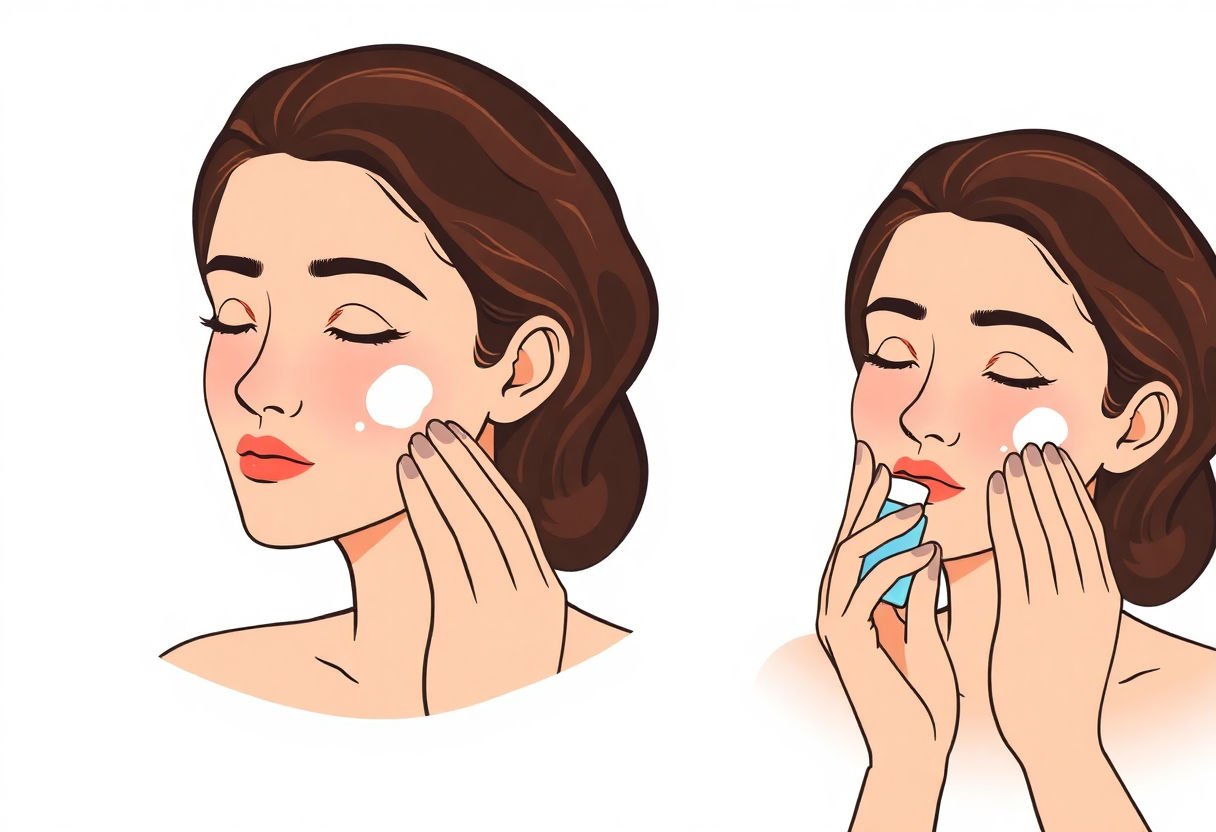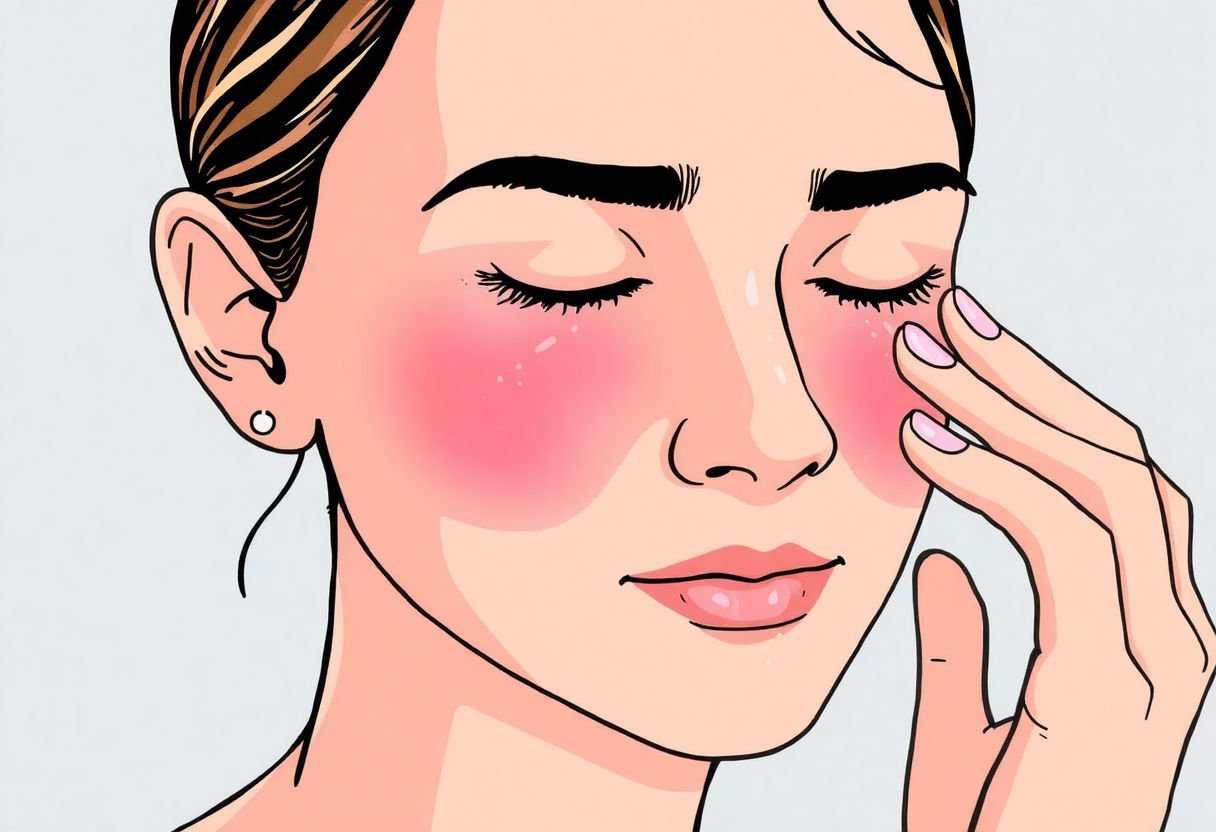Skincare lovers often wonder about the right order of products. This simple question can shape how effective your routine is. Retinol, known for its power to improve skin texture, works best when paired with the right product. But should you apply moisturizer before or after retinol? Dermatologists have their say. They outline two approaches, each with its perks. Learn how moisture affects retinol’s impact on the skin. See how it can protect or enhance. Follow expert tips to blend these products safely. Dive in to find the best routine for you. Your skin could thank you!
Key Takeaways
- Apply moisturizer before retinol to create a barrier that may reduce irritation.
- Use retinol before moisturizer to let retinol penetrate better into the skin.
- Choose your sequence based on how sensitive your skin is; more sensitive skin may benefit from moisturizing first.
- Retinol can improve skin texture and reduce signs of aging when used correctly.
- Moisturizers help soothe and protect the skin, ensuring it stays hydrated.
Understanding Retinol and Its Benefits
Retinol is a star in skincare. It comes from vitamin A. It helps the skin in many ways. It fades dark spots, smooths fine lines, and makes skin look fresh. Retinol speeds up the cell cycle, like a car revving its engine. New skin cells replace old ones faster.
People with acne find retinol helpful. It keeps pores from getting clogged. It also reduces acne scars. It’s like pressing a reset button on your skin. This magic happens best when retinol is trusted by dermatologists.
Here are some benefits of retinol:
- Reduces Wrinkles: Retinol smooths out wrinkles and fine lines. Skin looks younger.
- Clears Acne: Regular use stops breakouts and clears acne scars.
- Fades Dark Spots: Retinol evens out skin tone. Dark spots don’t stand a chance.
- Improves Texture: Skin feels softer and smoother with retinol.
Using retinol might make skin sensitive at first. Some redness or peeling may occur. This is normal. Start with a small amount. Gradually increase it as skin adjusts. Like wearing new shoes, it can take time to get comfortable.
Retinol works best with other products. Consider using it with a moisturizer. It can help calm the skin and boost benefits. Choose a gentle moisturizer for the best results. Remember, retinol takes time to work. Patience and consistency are key. Use it regularly for the best outcome.
The Role of Moisturizer in Skincare
Moisturizers play a big part in skincare. They do more than add hydration. They help keep skin balanced and healthy. When you skin use moisturizers, you boost its protective layer. This layer shields against dryness, cold, and dirt.
Imagine your skin like a brick wall. Moisturizers act like the cement. They hold the bricks together. In skin terms, they lock in moisture and keep bad stuff out.
Moisturizers often come with these key ingredients:
- Humectants: These are like sponges. They draw water from the air into the skin.
- Emollients: They smooth and soften. Think of them like the oil that greases a door hinge.
- Occlusives: Picture cling wrap on leftovers. They seal in moisture.
These three ingredients make sure your skin does not dry out. They work to keep it smooth and soft.
Using moisturizer after washing your face traps any left moisture. It feels like a refreshing drink on a hot day for your skin. This way, the skin remains supple and smooth.
In skincare routines, moisturizers act as a base. They prepare the skin for any other product. When paired with retinol, a popular skin treatment, moisturizers can help reduce the dryness it sometimes causes.
By adding moisture, they help skin look more youthful and vibrant. Moisturizers make a real difference. They help make sure your skin stays its best. Remember to use moisturizer any time you clean your face. Your skin will thank you.
Dermatologists’ Recommended Routine

Dermatologists suggest a straightforward routine to get the most from your skincare products. Following their guidance can help you achieve healthy skin.
Cleanse your skin: Start with a gentle cleanser. A clean face helps absorb the next products better.
Apply retinol: Retinol comes next. It might irritate if you use it alone, so start small. Use a pea-sized amount and spread it evenly.
Use moisturizer: Moisturizer goes on after retinol. It locks in moisture and protects your skin from drying out. Choose a moisturizer that suits your skin type.
Use sunscreen: Sunscreen is a must in the morning. Retinol can make your skin sensitive to the sun. Use broad-spectrum SPF 30 or higher.
Some dermatologists suggest using a “moisturizer sandwich.” They say to apply a thin layer of moisturizer before retinol and then another after. It can buffer the retinol’s effect and reduce irritation.
Tip from the experts: If your skin gets dry or flaky, use retinol every other day. Allow your skin to adjust to the new product.
Everyone’s skin is different. Check with your dermatologist if you have concerns. They can offer advice specific to your skin type.
Benefits of Applying Moisturizer Before Retinol

Applying moisturizer before retinol can be a smart move for many. It can help your skin in several ways.
Creates a Barrier
Putting on moisturizer first makes a barrier. This helps slow down how fast your skin takes in the retinol. Retinol can be strong. Not everyone’s skin likes that strength. The barrier from the moisturizer cuts down the chance of getting red, itchy skin.
Keeps Skin Hydrated
Retinol can make your skin dry. It may feel tight or flaky. A good moisturizer helps lock in water. This keeps your skin soft and smooth. You feel more comfortable, and your skin looks better.
Improves Absorption
Think of a sponge. If a sponge is dry, it doesn’t suck up water well. But slightly wet, it works better. Moisturizer acts the same way. It preps your skin to take in retinol evenly.
For Sensitive Skin
Some people have delicate skin. They get bumps or rashes easily. A gentle layer of moisturizer can make retinol safer for them. It calms the skin and reduces bad reactions.
Steps to Follow
- Clean Your Face: Use a gentle cleanser.
- Apply Moisturizer: Pat it on as a light coat.
- Add Retinol: Spread it thinly over the moisturizer.
Doing it this way makes retinol work better, especially if your skin is sensitive. So, try this routine and see the difference it makes for you.
Benefits of Applying Moisturizer After Retinol

Using moisturizer after applying retinol brings many benefits for your skin. Retinol can make skin dry, and a moisturizer can help prevent this. Think of moisturizer like a warm blanket on a cold night. It wraps around and keeps skin calm and smooth.
Moisturizer can help seal in the retinol. It forms a layer that holds the retinol on your skin, letting it work better. This means you can enjoy retinol’s benefits without getting dry patches.
For those with sensitive skin, using moisturizer after retinol can reduce irritation. No one likes feeling itchy or uncomfortable after a skincare routine. Soothing creams can help avoid this unpleasantness.
Benefits of Using Moisturizer After Retinol:
- Hydration: Keeps skin soft and plump.
- Protection: Acts like a shield to guard against dryness.
- Enhanced Effects: Boosts the impact of retinol by locking it in.
- Comfort: Minimizes any burning sensation from retinol.
Dermatologist Dr. Lee says, “Applying moisturizer after retinol can make the skin feel much more comfortable.” Following this routine could make a big difference for those with dry or sensitive skin. Your skin will thank you!
Potential Risks and Skin Sensitivities

Applying retinol requires special care. Retinol can cause skin irritation. Some people experience redness or peeling. Those with sensitive skin should be extra cautious. Imagine the discomfort of sunburn. That’s how retinol irritation can feel.
Common Side Effects:
- Redness
- Dryness
- Peeling
- Itching
Sensitive skin often reacts quickly. Retinol might worsen conditions like eczema. If you notice any irritation, slow down your usage.
Moisturizers help soothe these effects. Think of it as a shield. It locks in moisture and protects the skin. Some dermatologists suggest using a gentle, fragrance-free lotion.
Start using retinol once or twice a week. Then, apply a moisturizer as needed. This gradual approach can reduce reactions.
Patch testing is a smart step too. Test retinol on a small area first. Wait 24 hours and check for any reactions.
Consult a dermatologist if unsure. They provide guidance based on your skin type. Proper advice helps in managing potential risks.
Remember, everyone’s skin is different. What works for one might not work for another. Be patient and attentive to your skin’s needs.
Tips for Incorporating Retinol into Your Routine

To add retinol to your routine, start by using it slowly. It can be strong, so your skin needs time to get used to it. Begin with once or twice a week. Listen to your skin. If it feels good, you can use it more. But if it gets red or flaky, go back to less often.
Always apply retinol at night. Light makes it less effective. Retinol can dry your skin, so follow up with a good moisturizer. A good way to apply is to moisturize first if you’re new to retinol. This creates a barrier, making it milder. But if your skin can handle it, applying moisturizer afterward might work better for you.
You should protect your skin from the sun when using retinol. Always wear sunscreen in the morning. Retinol makes skin more sensitive to the sun. Skip retinol if you’ve been in the sun a lot, like after a beach day.
Here’s a simple thing to remember:
- Start slow: Use once or twice a week.
- Nighttime only: Keep it in your nighttime routine.
- Layer with care: Moisturize well.
- Wear sunscreen: Protect during the day.
Patience is key. Your skin will thank you for going slow and steady. If in doubt, chat with a dermatologist. They can give advice tailored to your skin type.
Conclusion
Applying moisturizer before or after retinol depends on your skin type and needs. Using it before can cushion the retinol, reducing irritation. Placing it after seals in moisture, enhancing retinol benefits. Match your routine to what your skin loves. Experiment to find the best approach. Most important, introduce retinol slowly. This helps your skin adapt. Listen to your skin’s response. Stay consistent for the best results. Skincare is a journey. Feel empowered to make choices that work for you.
Frequently Asked Questions
Should I use moisturizer before or after retinol?
Dermatologists say both ways can work. Applying moisturizer first can reduce irritation from retinol. If your skin is dry, this might be best. Applying it after can enhance retinol’s effects.
Can I use retinol every day?
Start with it once or twice a week. Increase it as your skin gets used to it. This helps reduce irritation risk.
What time should I apply retinol?
Use retinol at night. Sunlight can make it less effective. Night use helps avoid this issue.
Can I use retinol with other skincare products?
Yes, but be careful. Avoid using it with products like exfoliants. They might increase irritation.
What should I do if retinol irritates my skin?
Reduce usage. Apply moisturizer before retinol. Consider a gentler formula if irritation continues.
